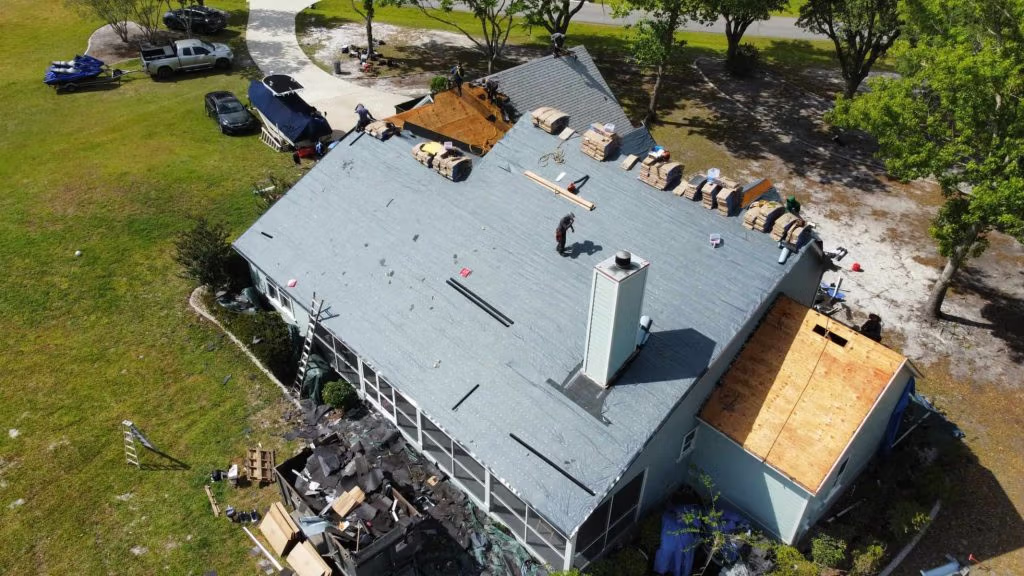Severe weather events can be unpredictable and devastating—especially in storm-prone regions like Florida. High winds, torrential rain, hail, and hurricanes can take a major toll on your home’s most critical protective feature: the roof. That’s why having a comprehensive storm emergency roof plan isn’t just smart—it’s essential.
Far too often, homeowners wait until after a storm to figure out how to deal with roof damage. But with a well-thought-out emergency roof repair plan, you can act quickly, minimize further damage, and streamline your recovery process. This article will walk you through everything you need to know about roof storm damage response, emergency preparedness, and post-storm protocols, so your home is protected year-round.
Why You Need a Roof Emergency Preparedness Plan
Your roof is your first line of defense against the elements. When a storm is approaching, you don’t want to waste precious time figuring out what to do. By developing a roof emergency preparedness plan, you can ensure safety, prevent extensive damage, and potentially save thousands in repair costs.
A thorough plan will help you:
- Know exactly how to secure vulnerable areas.
- Prepare materials and emergency contacts in advance.
- Avoid making panicked decisions under pressure.
- Quickly assess and document roof damage after the storm.
Having a plan in place also helps you communicate more effectively with roofing contractors, insurers, and emergency personnel during times of crisis.
Preparing Your Roof for Storm Season
Knowing how to prepare your roof for a storm is a key part of preventative maintenance and long-term durability. Start by scheduling a professional inspection before storm season begins. Look for warning signs such as cracked shingles, loose flashing, clogged gutters, and weak structural areas.
Addressing these issues ahead of time is far more effective and affordable than dealing with them after a disaster. You should also clear nearby trees and overhanging branches, as these can become dangerous projectiles during high winds.
Part of your roofing plan for hurricane season should also include checking attic insulation and ventilation. Proper airflow can reduce the risk of moisture buildup during heavy rains and help your roof withstand pressure changes during storms.
Creating an Emergency Roofing Checklist
When storms hit, things move fast. An emergency roofing checklist ensures you stay organized and respond effectively. Here are a few critical items your checklist should include:
- Verify all drainage systems (gutters and downspouts) are clear of debris.
- Store heavy-duty tarps, roofing nails, and tools for temporary protection.
- Secure or remove rooftop equipment, antennas, or satellite dishes.
- Document your roof’s current condition with date-stamped photos.
- Make a list of emergency roofing contractors you trust, including 24/7 contact info.
- Ensure you have your homeowner’s insurance policy details easily accessible.
This proactive list helps you act quickly when it matters most and provides documentation for any future storm damage roof inspection or insurance claim.
What to Do Immediately After a Storm Hits
Once the storm passes, it’s time to implement your storm damage roof action plan. The first step is safety. Do not climb on your roof until it has been inspected, especially if power lines are down or you suspect structural damage.
Instead, walk the perimeter of your home and inspect for visible signs such as:
- Missing or lifted shingles
- Displaced flashing or vents
- Leaks or water stains on ceilings or walls
- Pieces of roofing material on the ground
If you see significant damage, it’s time to call a roofing professional. A storm damage roof inspection by an expert is crucial to uncovering both visible and hidden issues.
Emergency Roof Tarp Installation and Temporary Measures
If your roof has sustained serious damage and rain is still in the forecast, emergency roof tarp installation can prevent further interior damage. A roofing contractor can place heavy-duty tarps securely over the compromised areas to shield your home until permanent repairs are completed.
In some cases, homeowners may attempt this themselves—but it can be extremely dangerous without proper equipment. Whenever possible, leave emergency tarp installation to professionals who are trained to work safely on unstable structures.
Temporary repairs such as sealing exposed seams, covering holes, and diverting water can buy time and reduce the extent of water infiltration. These measures are part of a solid post-storm roof damage protocol that ensures your home remains as protected as possible while waiting for full restoration.
The Roof Repair Process After the Storm
Once your roof is stabilized, the next step is permanent repair. Roof repair after a storm typically involves multiple stages:
- A comprehensive roof inspection to assess the full extent of damage.
- A detailed repair estimate for you and your insurance company.
- Material selection that matches your existing roof or upgrades to better options.
- Scheduling and performing the repair or replacement.
- Final inspection to ensure the integrity of the new or restored roof.
If you’re working with a reliable roofing contractor like Gravity Roofing, they’ll also assist you with insurance documentation, photo evidence, and help expedite your claim. That’s especially important if you’re dealing with high insurance deductibles or confusing claim language.
Understanding the Insurance Side of Roof Storm Damage
Having a roof insurance policy is only helpful if you understand how to use it. After a storm, you’ll need to report the damage promptly and begin your roof storm damage response with your insurance provider. The adjuster will inspect the damage and determine if your policy covers the necessary repairs.
Common factors that affect your coverage include:
- The type of policy (replacement cost vs. actual cash value)
- The age of your roof
- Maintenance records (this is why routine inspections are crucial)
- The cause of damage (storms, fallen trees, hail, etc.)
Your roofing contractor should be present during the adjuster’s visit whenever possible. This helps ensure nothing is overlooked and your claim is accurate. Being prepared with a well-documented roofing emergency response guide will help move the claim process along more smoothly.
Long-Term Protection: Lessons from the Storm
Every storm is a learning experience. After your roof is repaired, take time to review what worked—and what didn’t—in your response plan. Update your storm emergency roof plan to reflect new insights and improvements.
You may want to consider upgrading roofing materials to more weather-resistant options or even installing impact-resistant shingles. These decisions can strengthen your home and potentially lower future insurance premiums.
Also, establish a long-term maintenance plan with your roofer. Routine inspections and seasonal checkups can identify weak points before they become major issues, keeping your roof in top condition year after year.
Conclusion: Stay Ready, Stay Protected
When it comes to storm damage, preparation is everything. A well-developed emergency roof repair plan gives you control in chaotic situations, protects your property, and ensures a faster recovery. By understanding how to prepare your roof for storms, having a reliable contractor on call, and knowing how to navigate the insurance process, you can face any storm with confidence.
If you want expert help building your storm emergency roof response plan or need immediate post-storm assistance, turn to the professionals at Gravity Roofing. Our experienced team specializes in storm damage repair, inspections, emergency tarping, and working with insurance companies to make the process seamless for homeowners.
Contact Gravity Roofing today to schedule your pre-storm inspection or get emergency help fast. Protect your home before the next storm strikes—because peace of mind starts with a strong, secure roof.














